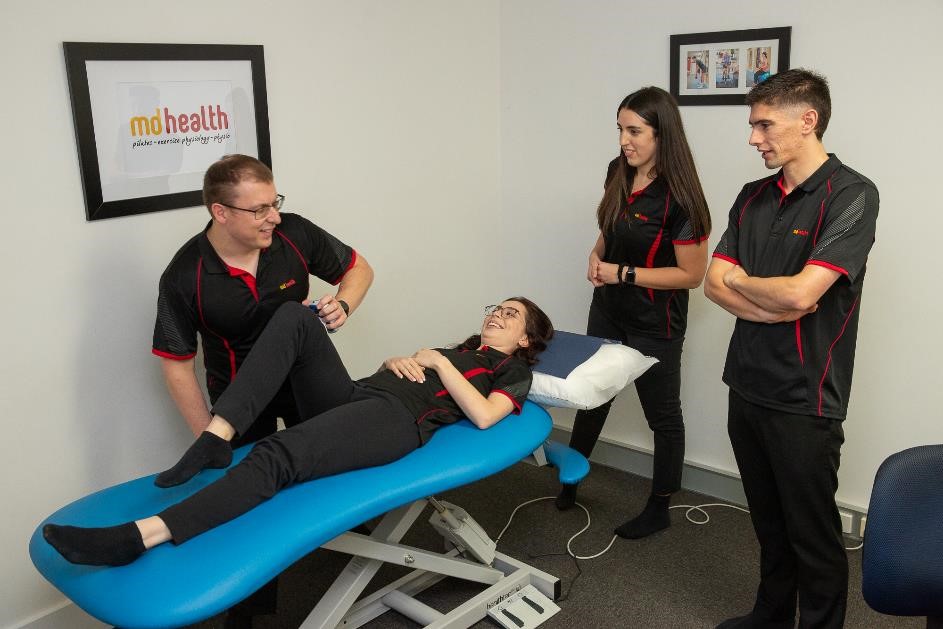When I finished my physiotherapy degree almost 25 years ago, the general career advice I received was that if I didn’t work in a hospital for the first few years of my professional life, I wouldn’t get a well rounded education in physiotherapy and would struggle to go back to working in the hospital setting in the future (if I wished to do so). In general, this still seems to be the dominant advice to physiotherapy students today, 25 years later, however this advice is based on certain myths that are just untrue and do not reflect the current actual workforce.
Firstly, and very importantly, the majority of work in the physiotherapy industry is in the private sector. Over 70% of the profession is employed in the private sector and when the general public think about what “physiotherapy” means to them, the image is generally of the physio they saw in the local clinic for a knee or a back problem.
The training and skills required to work in the private sector are different than in the public hospital system. In general, in the hospital setting, the physiotherapist is a small part of their patient’s health journey, together with the team of doctors, nurses, administration stuff and other healthcare practitioners. In the private sector, we are often the “first contact practitioner”, meaning that we are often responsible for the determining the diagnosis and the direction of the client’s health journey.
This is a responsibility that can be quite daunting for a newly graduating physiotherapist and unless they have been exposed to the private sector during their degree (over 90% of clinical training occurs in the public hospital sector), quite overwhelming for their first job.
This should not be a concern at all, with the selection of the right graduate position for your first job out of university either in the private sector or in the public sector when these previously held beliefs, that are now myths, are busted
Myth 1: You’ll only get proper training and support in a public hospital
In our practice (and other well-structured practices), the quality of the service delivery to the patients is extremely important. We well know that physiotherapy students have had good general training, but have a lack of real-life practical experience. It is our job as a practice to establish a graduate’s mature professional skill level through proper training, mentoring and support.
The most basic training in the first year in practice should be the skills required for proper assessment, diagnosis and planning and the implementation of treatment for a variety of common injuries.
In our practice, we make sure we cover the main areas encountered, including the neck, back, shoulders, hips, knees, pelvis and ankles. In addition, specific training on areas of weakness identified need to be addressed, so that the developmental needs of the particular graduate are worked on and improved. For one person it may be narrowing the story from taking a history so that the important points are discovered and guide the direction of examination. For another graduate, it may be developing thorough treatment planning skills to address the patient who presents with multiple issues, organizing priorities for most to least important.
Myth 2: You will be working on your own without direct access to supervisors and senior staff
A well structured practice will ensure that graduates have direct access to senior clinical staff members who are there to answer questions, assist with patient management and if required, step in and take over the situation when the scenario is too overwhelming for the graduate.
In our practice, we have structured that all clinical staff members have direct access to a clinical staff manager who is not only the first port of call for any clinical questions by graduate staff members, but also pro-actively monitors and develops the most appropriate and individual development plan for each graduate staff member based on their needs.
In addition, with a good team environment, all clinical staff members should understand that they are better off working together and assisting each other in clinical scenarios for the best results for each client. Therefore, ideally an environment is fostered that a graduate staff member feels comfortable enough to approach any senior staff member to ask questions and assist when they are put in a situation when they don’t know what to do and need help.
Myth 3: It’s all about sales
One of the major luxuries we have in the private sector is that we are not constrained by the number of days the patients is in the hospital to implement the best and most appropriate treatment plan for the patient. This is not about selling, but understanding the best needs of the patient.
For example, if a patient has had an ACL re-construction, we know that this is about a 12 month process from operation to return to sport. We are able to present and implement a treatment plan that reflects the ideal scenario for the patient to get the best outcome. Although the patient always has a choice in the direction that they take with their rehabilitation, at least we have the option of presenting the best scenario to the patient and seeing it through.
This is extremely satisfying as a clinician, because you are able to see your patients achieve their best outcomes, their ideal goals and return to the life they desire. This is kind of the reason that a lot of us (including myself) went into the profession, to make a real difference in people’s lives and seeing them live the best lives they possibly can.
Join the discussion and have your say?
- Comment below!
- Call us on (03) 9857 0644 or (07) 3505 1494 (Paddington)
- Email us at admin@mdhealth.com.au
- Check out our other Health Business blog posts here
Our clinical staff would be happy to have chat if you have any questions.



